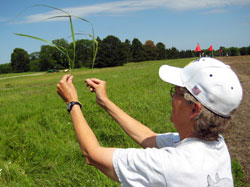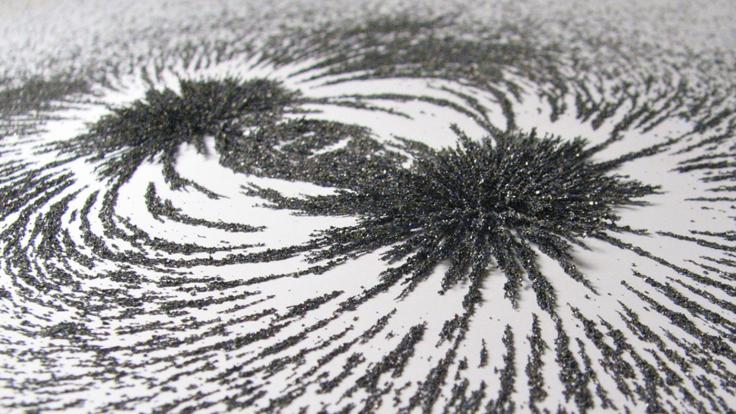 |
|
Photo: Fermilab |
Fermilab grasses may thwart damaging greenhouse gases
Michael Miller watches grass grow for a living—super grass, of sorts, grass that could fuel a car and reduce carbon dioxide emissions at the same time.
He and other researchers from Argonne National Laboratory and the University of Chicago have turned 13 acres at Fermilab into an outdoor laboratory. Their goal is to find the best ways to use native prairie grasses to attack the global warming and fuel crises.
"I believe nature has given us a lot of variety to work with," says Miller, a senior Argonne scientist. "It is just identifying those traits that fit best with what man needs."
Miller and his colleagues are studying seven combinations of prairie grasses, including plots of switchgrass and big bluestem planted in June as well as native grasses that thrive on Fermilab's restored prairie.
He's trying to determine which factors produce the most durable, bountiful grasses for use as fuel. He'll also determine their carbon footprints, balancing the amount of carbon needed to grow the plants and turn them into fuel against the amount of carbon they sequester, or store, in the soil as their roots die and decompose.
By the end of 2009, Miller and his team hope to have a clearer picture of which combinations of grasses would create the most efficient, environmentally friendly feedstock for fuels.
Switchgrass already has known advantages over corn as a feedstock for biofuels. It grows four to eight feet tall in dense patches across the Midwest, flourishing in areas not normally tilled for crops. The grass needs replanting only once every decade, can grow with little or no fertilizer, tolerates drought, and sequesters the same amount of CO2 that would be released by burning it for fuel. That makes the production of fuel from switchgrass carbon neutral or even carbon negative.
Even if native grasses are not harvested for fuel, they still provide a benefit by trapping greenhouse gases. Miller says 900 acres of Fermilab prairie store as much carbon dioxide in soil as 250 compact cars emit in a year.
"What we are trying to do is take advantage of our prairie system," Miller adds. "Fermilab's long history of maintaining and restoring the prairie gives us a lot of knowledge about the grasses."
Tona Kunz
Click here to download the pdf version of this article.






